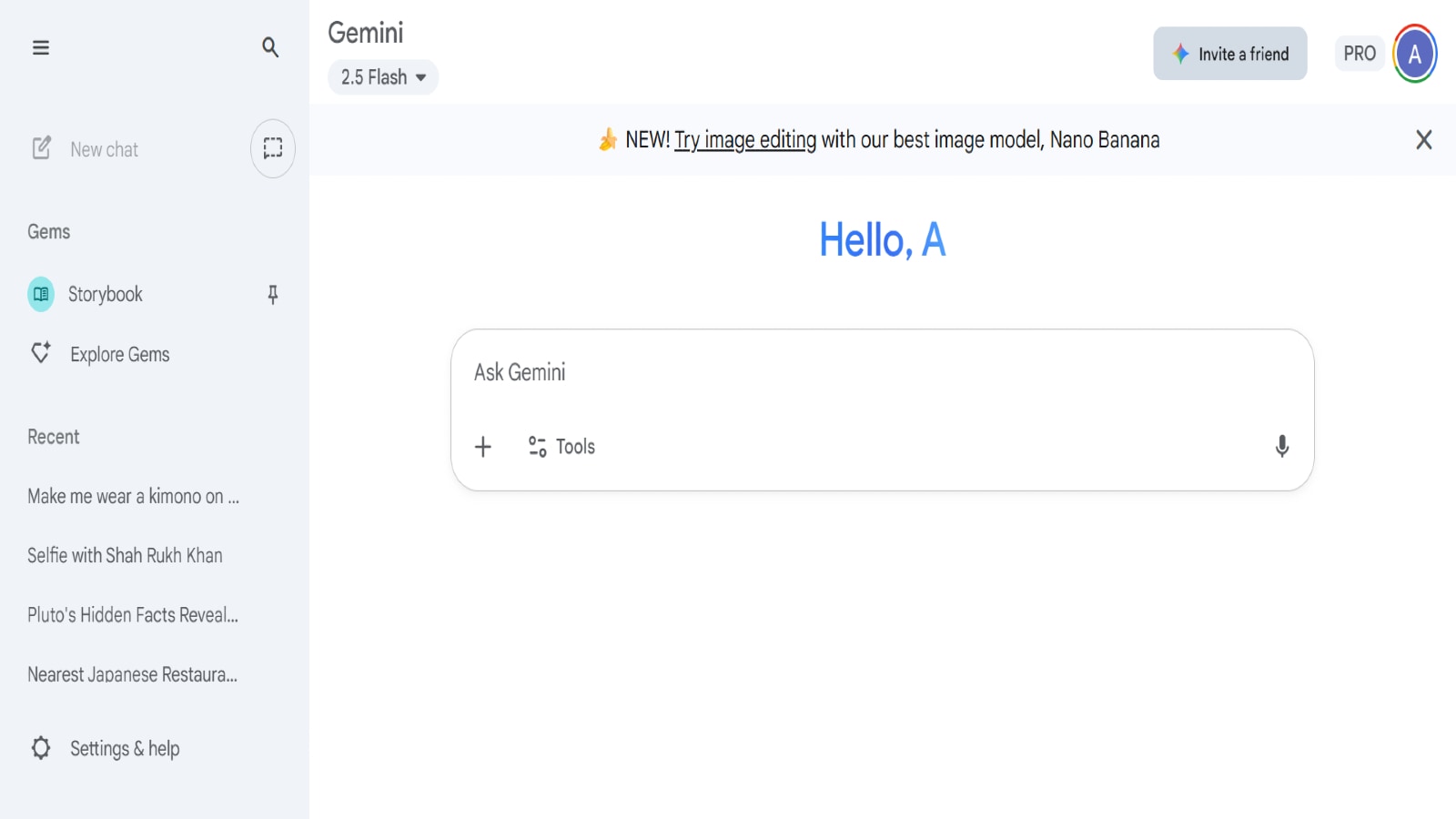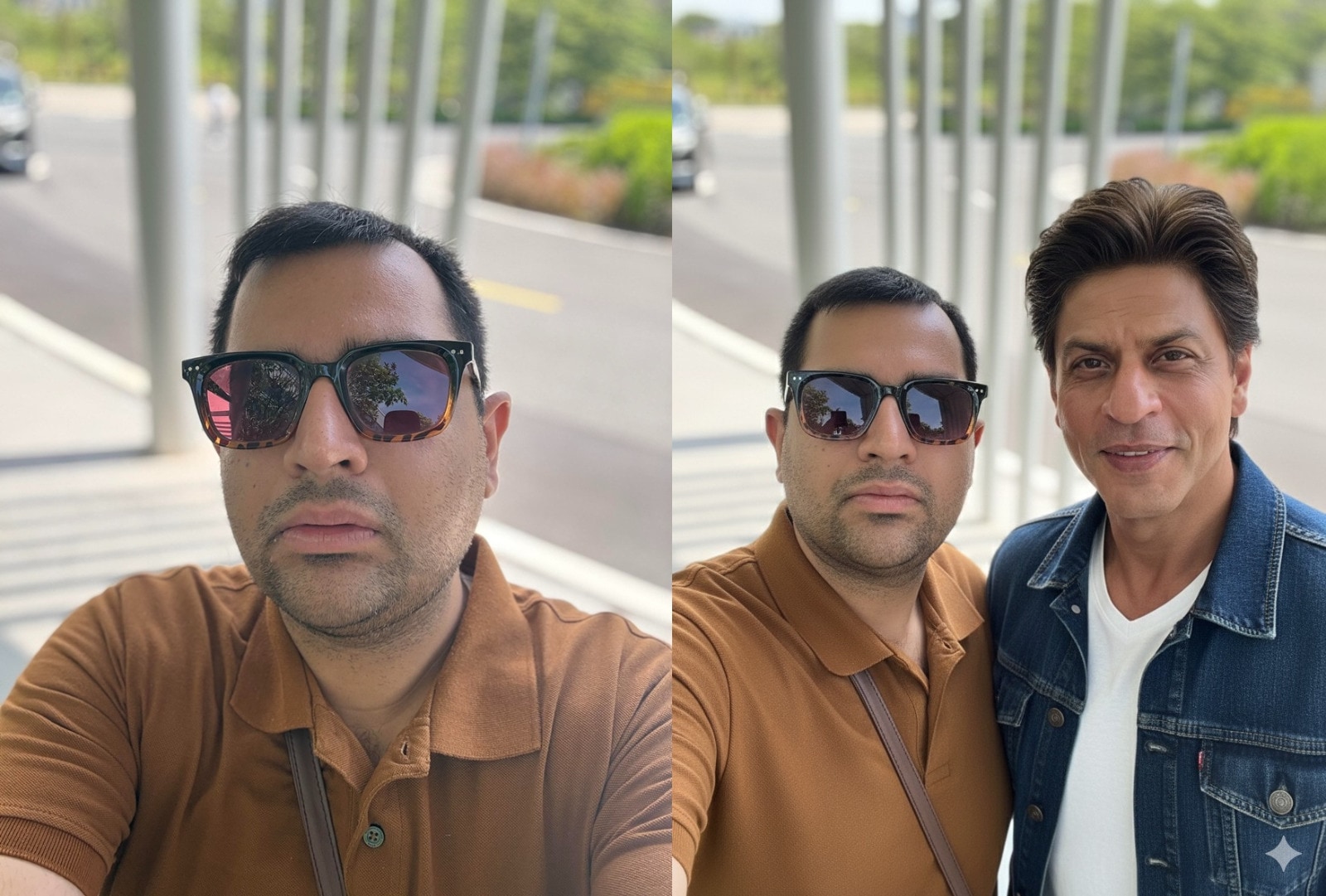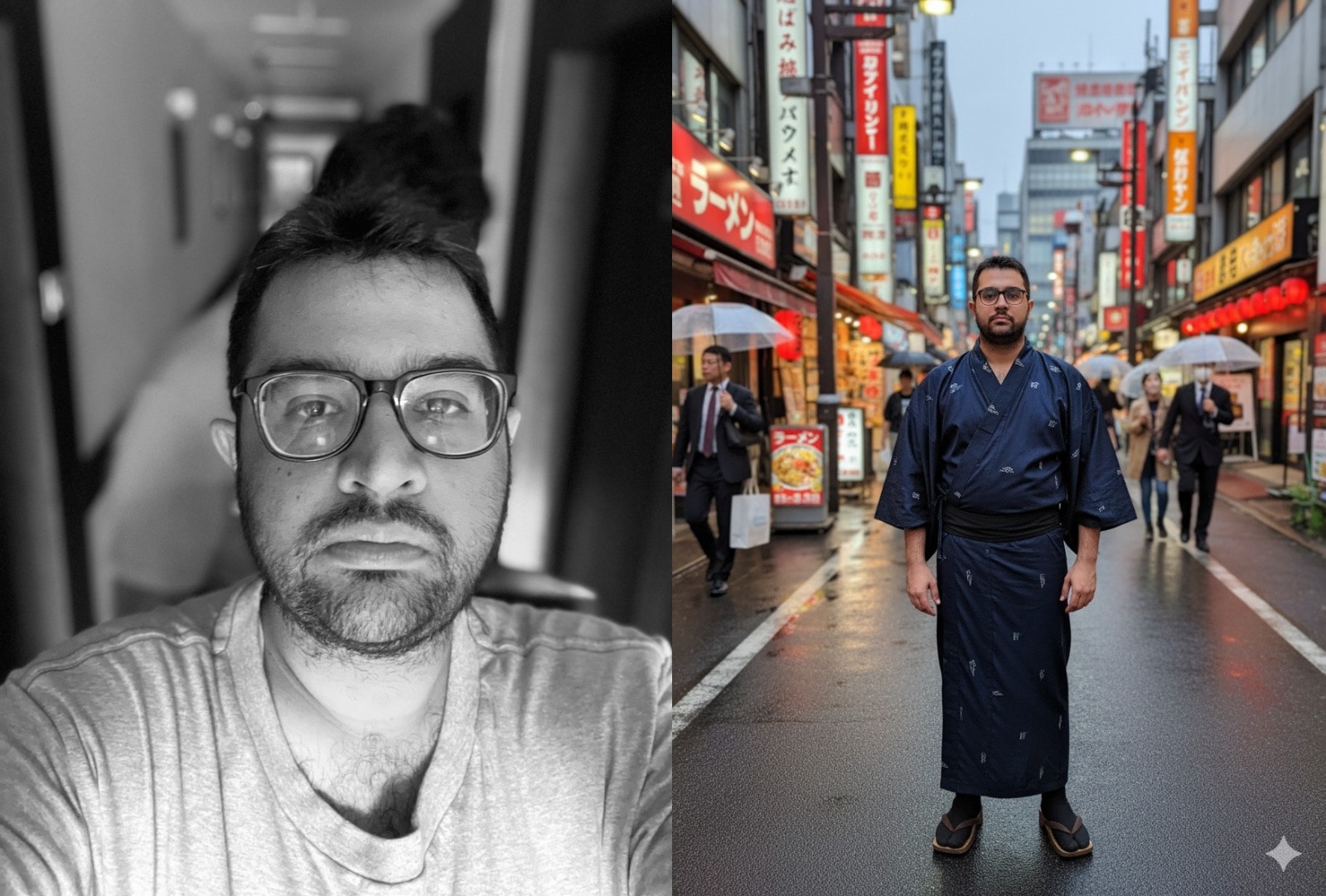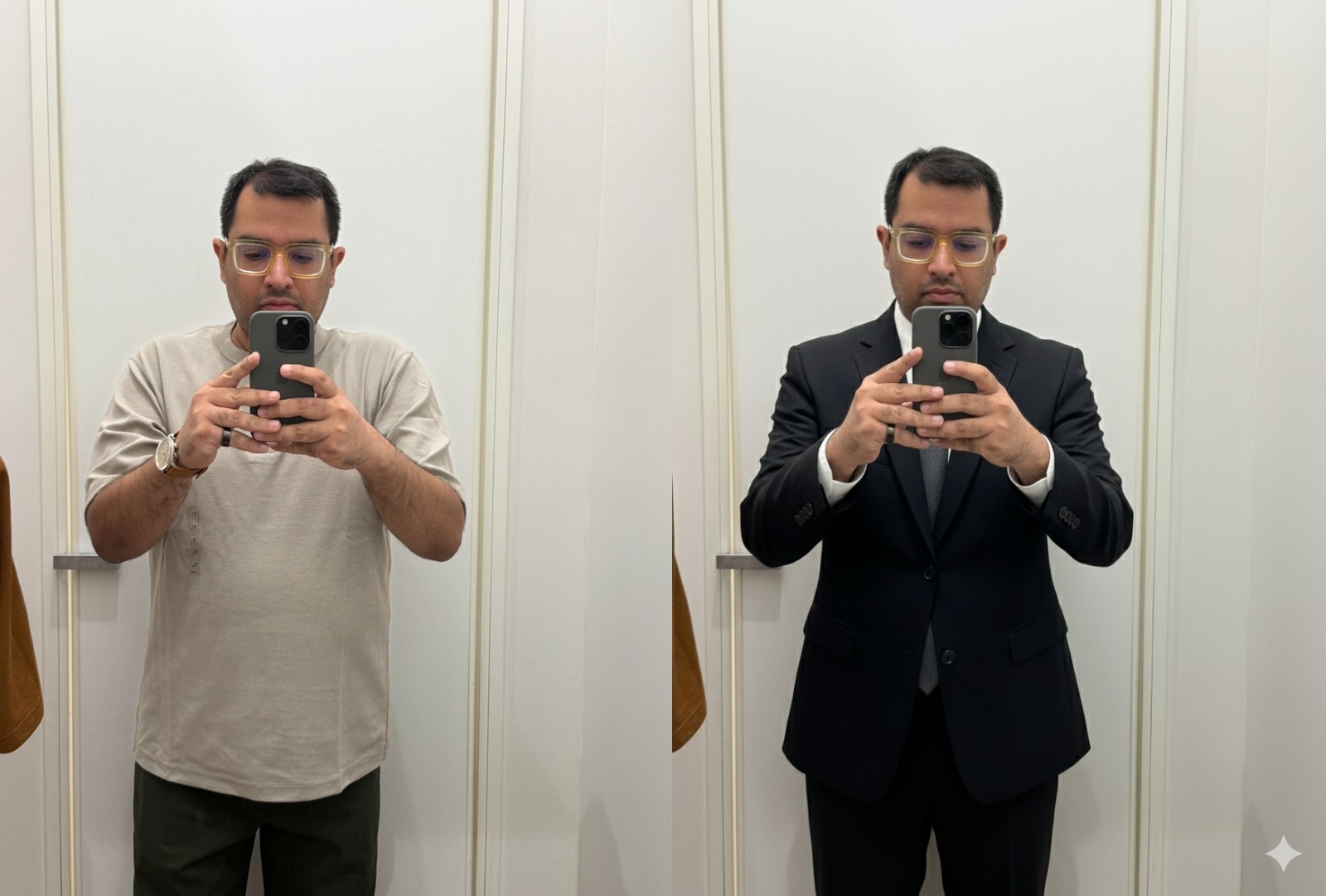Over the weekend, my LinkedIn feed was flooded with pictures of people taking selfies with everyone from Bollywood actor Shah Rukh Khan to Tesla boss Elon Musk. In one photo, an executive appeared to be taking a selfie with Shah Rukh Khan at Harvard Business School, and the image looked completely believable.
However, when I read the post, I discovered that the picture had been created using Nano Banana, a new image editing model from Google’s DeepMind unit. The model was first released last week, and later integrated into Google Gemini.
I tried it, and here’s why Google’s new image editing model is going viral on social media (for all the right reasons).
How to use Nano Banana
Google’s Gemini can already create AI-generated images, but the results haven’t always been the most impressive. Google DeepMind unit’s new AI model, nicknamed “Nano Banana” and officially called Gemini 2.5 Flash Image, works similarly to most AI image editing tools: you upload an image and describe the changes you want.
What sets this model apart, however, is its ability to handle highly specific edits, from changing a subject’s clothes or location to adding another person (like a celebrity) into a selfie. It’s fun to use Google’s Nano Banana model. To help prevent confusion over whether images are real or AI-generated, all outputs include both a visible watermark and an invisible one, called SynthID.
 All images have a visible watermark and an invisible watermark called SynthID to clear any confusion over whether they are real or AI-generated.
All images have a visible watermark and an invisible watermark called SynthID to clear any confusion over whether they are real or AI-generated.
Editing with Nano Banana
To edit an image using Nano Banana, open Google AI Studio and sign in with your Gmail account. Alternatively, you can use Google Gemini. Once you open it, you will see a banner at the top that says: NEW! Try image editing with our best image model, Nano Banana. From there, simply upload an image, write a prompt, and your edited image will be ready in a few seconds.
Selfie with Shah Rukh Khan
I tried editing an image using several different scenarios. The first thing I imagined was taking a selfie with Shah Rukh Khan. For example, I used a recent selfie I took in China and wrote the prompt: “A selfie with Shah Rukh Khan.” In just a few seconds, I got the result, and I was shocked at how realistic it looked. It showed me standing next to Shah Rukh Khan, and the image was convincing.
Story continues below this ad
When I shared the AI-generated picture in a WhatsApp group, one of my colleagues even gave it a thumbs-up, thinking I had actually taken a selfie with him.
 Here’s the original image (left), and here’s the Gemini-generated image, a selfie with Shah Rukh Khan (right).
Here’s the original image (left), and here’s the Gemini-generated image, a selfie with Shah Rukh Khan (right).
If you look closely, you will notice that the AI didn’t de-age Khan too much, unlike in some of his recent movies, such as Pathaan and Jawan, where he has been heavily de-aged using CGI (as is common with many senior male actors these days). He doesn’t look like he did in his late 20s, and that actually adds to the realism. The difference in height between us was also taken into consideration. Khan isn’t particularly tall, and neither am I.
To test the model’s accuracy, I tried another prompt: “A selfie with Brad Pitt.” When Gemini created that image, the height difference between me and Pitt was clearly visible, further proving how convincing the Nano Banana model really is.
 Another selfie – this time with Brad Pitt. Can you belive it is an AI generated image?
Another selfie – this time with Brad Pitt. Can you belive it is an AI generated image?
Wearing a kimono on the streets of Tokyo
As soon as I saw the convincing selfie with Khan, my creative juices started to flow. I then imagined myself in a kimono, a long robe secured around the waist with an obi belt. It’s a traditional Japanese garment worn by men and women.
Story continues below this ad
Here’s the prompt I used: “Make me wear a Kimono on the streets of Tokyo.”
The results I got were a mixed bag. The first picture I uploaded was a partial selfie (not a full-body photo), and while Gemini did successfully change the background ( imagining me wearing a kimono on the streets of Tokyo), the face in the image wasn’t mine. It looked AI-generated.
I would say the person in the Gemini-generated picture resembled me somewhat, but it wasn’t quite right. I believe that to generate a more accurate image, Gemini needs a full-length photo – ideally, a close-up picture of mine. It remains a complex task for AI to generate a realistic image when asked to imagine a whole scenario from just a selfie, especially when aiming for an accurate representation.
 The Nano Banana AI model does make mistakes, as you can see in the image on the right. I don’t like the person dressed in a kimono.
The Nano Banana AI model does make mistakes, as you can see in the image on the right. I don’t like the person dressed in a kimono.
Virtual try-on
Another use case I discovered for Gemini’s image editing with the Nano Banana model is trying on virtual clothes. I uploaded a recent picture of myself, taken inside the changing room of a Uniqlo store in Shenzhen, China, and wrote a prompt asking Gemini to dress me in a suit.
Story continues below this ad
Although I don’t usually wear suits. In fact, I feel a bit nervous wearing them, but this fun experiment helped me imagine what I might look like if I ever needed to wear one. Before going to a store to try on a ready-made suit, I could simply upload a photo and ask Gemini to dress me in a classic black suit.
It might sound a bit silly, especially since many factors contribute to making a well-fitted suit, but this kind of virtual try-on can boost confidence, and help you feel better about yourself and your body, just as I did.
The results were impressive. Gemini generated an image that accurately represented my body type and height. My face wasn’t pixelated, and the image quality wasn’t compromised in any way. However, I noticed my watch was removed from my wrist, so it does make mistakes. To clarify: I am not as lean as I appeared in the Gemini-generated picture, but that’s not the AI’s fault. The T-shirt I tried on in Uniqlo’s trial room made me appear slimmer than I actually am.
 Virtual try-on is the impressive use case of the newly released Google AI model.
Virtual try-on is the impressive use case of the newly released Google AI model.
More use cases to be explored
It’s still early days for Google’s Nano Banana model, and I am pretty sure that many more use cases are yet to be explored. Based on my time testing the new AI model, I can see how it’s being trained to make subjects more consistent and accurate, a step forward for AI-generated images, which previously often felt either unpredictable or far from reality – at least where humans are involved.

